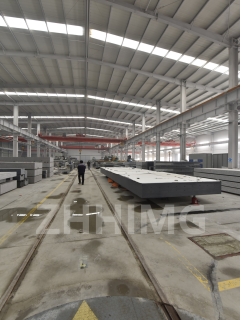Granite is a popular material used in the manufacturing of optical waveguide positioning devices. This is because it is strong, durable and provides high precision levels. However, like any material, granite is also prone to damage with time or excessive use. The damage can manifest in different ways, such as chipping, cracking, scratches or discolouration, which can affect the appearance and accuracy of the optical waveguide positioning device.
Fortunately, damaged granite components can be repaired and recalibrated to restore their appearance and accuracy. The following are the steps to follow to repair the damaged granite components on your optical waveguide positioning device.
Step 1: Visual Inspection
The first step in repairing damaged granite components is to conduct a thorough visual inspection. This will help you to identify all the areas that need repair, recalibration or replacement. Take a close look at the granite components and note down any scratches, chips, cracks or discolouration that you find. Scrutinize the overall condition of the granite components and note any signs of wear and tear.
Step 2: Prepare the Surface for Repair
Before you can make any repairs, it is important to ensure that the surface is clean and ready for repair. Use a soft brush or cloth to remove any dirt, debris or loose particles on the surface. Then, use a granite cleaner and polish to clean the surface. This will help to remove any stains or discolouration and leave the surface shiny and looking like new.
Step 3: Make the Repairs
The next step is to make the repairs depending on the type of damage. For scratches or minor chips, you can use a granite repair kit that contains epoxy and granite dust. Mix the epoxy with the granite dust to form a paste and use a putty knife to spread it over the scratch. Smooth the surface with a flat card and let it dry overnight. Once it is dry, sand the surface until it is smooth and shiny.
For major chips or cracks, you might need to call in a professional to make the repairs. This is because such repairs require specialized tools and expertise to ensure that the repairs are strong and long-lasting.
Step 4: Recalibration
Once you have made the repairs, it is important to recalibrate the optical waveguide positioning device to ensure that it is accurate. This involves adjusting the positions of the components to ensure that they are in the correct alignment and that the readings are correct. You might need to use specialized measuring tools and software to recalibrate the device.
Step 5: Regular Maintenance
Regular maintenance is crucial to ensure that your optical waveguide positioning device remains in good working condition. This involves cleaning the granite components regularly, inspecting them for any signs of damage and making repairs promptly. You can also protect the granite components from damage by using covers or protective coatings.
Conclusion
Repairing damaged granite components on your optical waveguide positioning device is important to restore its appearance and accuracy. By following the steps outlined above, you can make the repairs yourself or call in a professional to do it for you. With regular maintenance, your optical waveguide positioning device will provide you with accurate readings and precision for years to come.
Post time: Nov-30-2023

